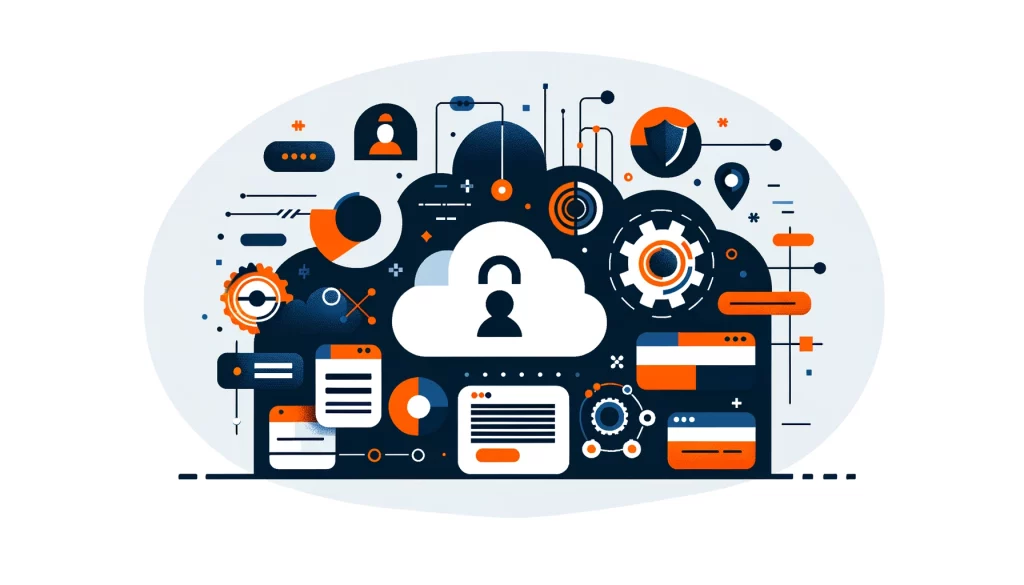
IAM: Identity and Access Management Overview

IAM is a technology for managing digital identities and controlling access to resources in an organization. IAM systems ensure that the right individuals access the right resources at the right times for the right reasons. These systems are crucial for maintaining security and efficiency in both customer and employee environments.
IAM involves two main functions: authentication and authorization. Authentication verifies that users are who they claim to be, while authorization grants them permission to access specific resources.
Enhancing Security with IAM
One of the primary benefits of IAM systems is the enhancement of security. It helps eliminate weak passwords, which are a major cause of data breaches. With IAM, organizations can enforce strong password policies, require frequent password changes, and prevent the use of default passwords. This significantly reduces the risk of unauthorized access.
IAM also mitigates insider threats by ensuring that users only have access to the systems necessary for their roles. This principle of least privilege prevents users from accessing sensitive information or critical systems without proper authorization and supervision.
Advanced Anomaly Detection
Modern IAM solutions go beyond simple credential management. They use advanced technologies like machine learning and artificial intelligence to detect and block anomalous activities. If a user’s login patterns change, the system flags it as suspicious and acts accordingly. This proactive approach helps prevent potential security breaches before they happen.
Multi-Factor Authentication (MFA)
IAM systems enhance security through multi-factor authentication (MFA). MFA requires users to provide multiple forms of verification before gaining access. This includes something the user knows (password), has (smartphone), and is (fingerprint or facial recognition). By requiring multiple verification methods, the systems make it much harder for unauthorized individuals to gain access.
Simplifying User Management
IAM systems simplify the user management process for application owners, end-users, and system administrators. They provide a centralized platform for managing all user identities and access permissions. This makes it easier to onboard new users, manage existing users, and offboard departing users.
When a new employee joins, the IAM system automatically assigns access rights based on their role. Similarly, when an employee changes roles, the IAM system can update their access permissions accordingly. This automation reduces errors and speeds up the process.
Boosting Productivity
By centralizing and automating identity and access management, IAM systems boost productivity. Automated workflows handle new hires or role changes, ensuring quick and accurate access changes. This allows employees to focus on their core tasks unbothered by access issues.
An IT manager can use IAM to create workflows that assign access permissions to new hires based on their role. This removes the need for manual intervention and ensures new employees have access from day one.
Reducing IT Costs
IAM services can significantly reduce IT costs. By using federated identity services, organizations no longer need to maintain local identities for external users. This simplifies application administration and reduces the need for on-premise infrastructure. Cloud-based IAM services offer on-demand pricing, removing upfront license costs and maintenance expenses.
Ensuring Compliance
IAM systems play a crucial role in compliance management. They provide the necessary controls to meet industry standards and government regulations. During audits, organizations can demonstrate that their data is protected and access is properly controlled.
An organization can use IAM to ensure only authorized personnel access personal data, complying with GDPR. This helps the organization comply with GDPR requirements and avoid potential fines.
Transitioning to Cloud-Based IAM
Traditionally, IAM solutions relied on on-premises directory services like Microsoft Active Directory. However, the control model is shifting towards cloud-based identity solutions. These solutions, known as Directory as a Service (DaaS), offer several benefits.
Cloud-based directory services are accessible from anywhere, allowing users to authenticate and authorize regardless of their location. They provide a central directory service for the entire organization, supporting various devices and applications. This infrastructure-agnostic approach improves security and simplifies management.
A company with remote employees can use a cloud-based IAM solution for secure access to resources. Employees can authenticate using MFA and access the necessary applications without the need for a local directory server.
Improving Security with DaaS
DaaS solutions enhance security by providing central control over all IT assets. They add security layers like multi-factor access, strong passwords, and SSH keys. Without a central DaaS solution, organizations may need to recreate directory services for each cloud system or SaaS application, which is inefficient and insecure.
A company using multiple cloud services like AWS and Azure can use DaaS to manage access across all platforms. This centralizes security controls and ensures consistent access policies.
Conclusion
Identity and Access Management (IAM) is essential for maintaining security and efficiency in organizations. By managing digital identities and controlling access to resources, IAM systems help prevent unauthorized access and mitigate security risks. They simplify user management, boost productivity, reduce IT costs, and ensure compliance with regulatory requirements. As organizations move to cloud-based solutions, IAM will remain crucial for securing digital identities and protecting sensitive information.
IAM in DataSunrise
While DataSunrise is primarily known for its robust database security and compliance solutions, it also incorporates essential elements of IAM specifically tailored for database environments. The platform’s approach to IAM is centered around granular access control, providing organizations with the tools to manage user permissions effectively across various database systems.
DataSunrise’s capabilities include role-based access control, which allows administrators to assign and manage user privileges based on job functions or responsibilities. This is complemented by its advanced user activity monitoring features, enabling real-time tracking and auditing of user actions within the database.
Furthermore, DataSunrise’s dynamic data masking functionality adds an extra layer of security by obscuring sensitive data based on user roles and access rights. While not a comprehensive IAM solution for entire IT infrastructures, DataSunrise’s focused IAM features provide a crucial layer of security and compliance for organizations seeking to protect their critical database assets and meet regulatory requirements.
Contact our team for an online presentation and learn how to integrate DataSunrise in your projects.
